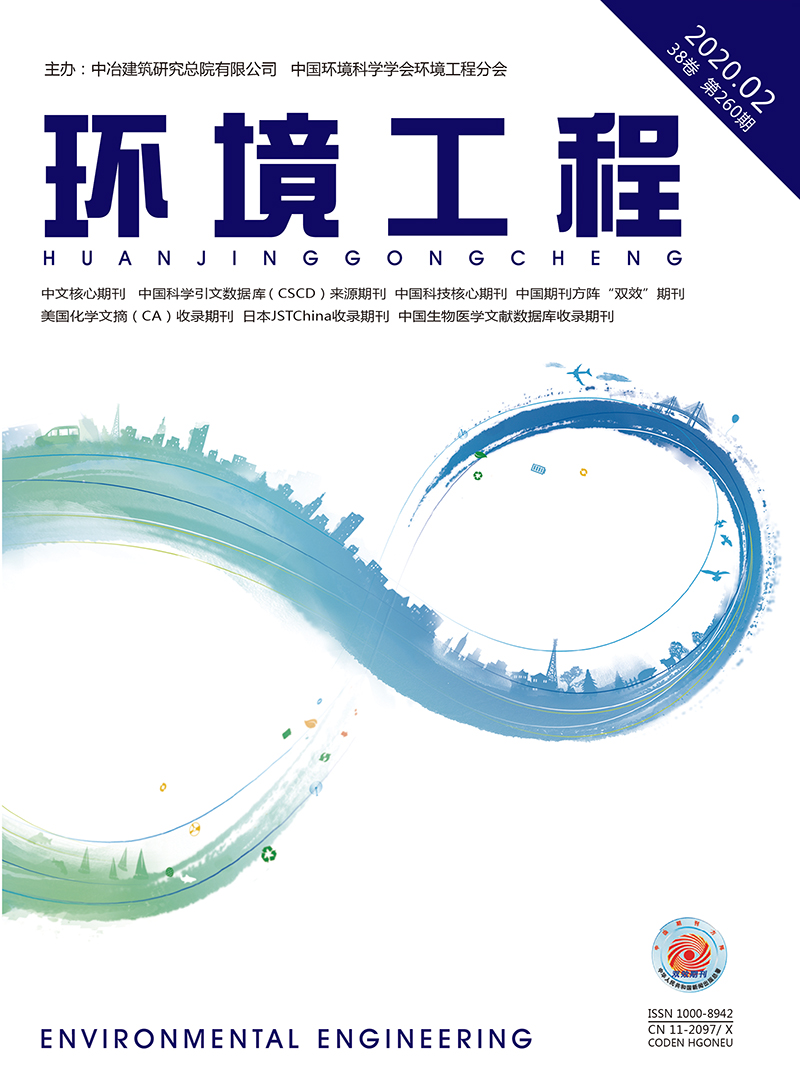|
中华人民共和国住房和城乡建设部. 中国城乡建设统计年鉴[G]. 2017. |
|
张军文, 沈建. 城市果蔬垃圾处理现状及再利用对策[J]. 安徽农业科学, 2017, 45(36):41-43.
|
|
MOHAMMED M, OZBAY I, DURMUSOGLU E. Bio-drying of green waste with high moisture content[J]. Process Safety and Environmental Protection, 2017, 111:420-427.
|
|
HE P J, ZHAO L, ZHENG W, et al. Energy balance of a biodrying process for organic wastes of high moisture content:a review[J]. Drying Technology, 2013, 31(2):132-145.
|
|
YUAN J, ZHANG D F, LI Y, et al. Effects of adding bulking agents on biostabilization and drying of municipal solid waste[J]. Waste Management, 2017, 62:52-60.
|
|
ZHOU H B, CHEN T B, GAO D, et al. Simulation of water removal process and optimization of aeration strategy in sewage sludge composting[J]. Bioresource Technology, 2014, 171:452-460.
|
|
赵进. 城市生活垃圾生物干化工艺优化设计研究[D]. 武汉:武汉理工大学, 2015.
|
|
余旺, 黄绍松, 孙水裕, 等. 接种菌剂和外加能源对污泥生物干化效果的影响[J]. 环境污染与防治, 2012, 34(8):39-43.
|
|
MOHAMMED M, DONKOR A, OZBAY I. Bio-drying of biodegradable waste for use as solid fuel:a sustainable approach for green waste management[J]. Agricultural Waste and Residues, 2018.
|
|
ZHANG D F, LUO W H, YUAN J, et al. Co-biodrying of sewage sludge and organic fraction of municipal solid waste:role of mixing proportions[J]. Waste Management, 2018, 77:333-340.
|
|
LIU H T, WANG Y W, LIU X J, et al. Reduction in greenhouse gas emissions from sludge biodrying instead of heat drying combined with mono-incineration in China[J]. Journal of the Air & Waste Management Association, 2017, 67(2):212-218.
|
|
TOM A P, PAWELS R, HARIDAS A. Biodrying process:a sustainable technology for treatment of municipal solid waste with high moisture content[J]. Waste Management, 2016, 49:64-72.
|
|
TAMBONE F, SCAGLIA B, SCOTTI S, et al. Effects of biodrying process on municipal solid waste properties[J]. Bioresource Technology, 2011, 102(16):7443-7450.
|
|
YUAN J, ZHANG D F, LI Y, et al. Effects of the aeration pattern, aeration rate, and turning frequency on municipal solid waste biodrying performance[J]. Journal of Environmental Management, 2018, 218:416-424.
|
|
SONG X, MA J, GAO J D, et al. Optimization of bio-drying of kitchen waste:inoculation, initial moisture content and bulking agents[J]. Journal of Material Cycles and Waste Management, 2017, 19(1):496-504.
|
|
YANG B Q, HAO Z D, JAHNG D. Advances in biodrying technologies for converting organic wastes into solid fuel[J]. Drying Technology, 2017, 35(16):1950-1969.
|
|
VELIS C A, LONGHURST P J, DREW G H, et al. Biodrying for mechanical-biological treatment of wastes:A review of process science and engineering[J]. Bioresource Technology, 2009, 100(11):2747-2761.
|
|
李春萍, 蔡先明, 秦侠, 等. 通风、翻堆和添加剂对垃圾生物干化和臭气排放的影响[J]. 环境工程, 2014, 32(3):83-86.
|
|
YU D W, YANG M, QI L, et al. Effects of aeration on matrix temperature by infrared thermal imager and computational fluid dynamics during sludge bio-drying[J]. Water Research, 2017, 122:317-328.
|
|
COLOMER-MENDOZA E J, HERRERA-PRATS L, ROBES-MARTINEZ F, et al. Effect of airflow on biodrying of gardening wastes in reactors[J]. Journal of Environmental Sciences, 2013, 25(5):865-872.
|
|
FREI K M, CAMERON D, STUART P R. Novel drying process using forced aeration through a porous biomass matrix[J]. Drying Technology, 2004, 22(5):1191-1215.
|
|
WU Z Y, CAI LU, KRAFFT THOMAS, et al. Biodrying performance and bacterial community structure under variable and constant aeration regimes during sewage sludge biodrying[J]. Drying Technology, 2017, 36(1):84-92.
|
|
ZHAO L, GU W M, SHAO L M, et al. Sludge bio-drying process at low ambient temperature:effect of bulking agent particle size and controlled temperature[J]. Drying Technology, 2012, 30(10):1037-1044.
|
|
MA J, ZHANG L, MU L, et al. Thermally assisted bio-drying of food waste:synergistic enhancement and energetic evaluation[J]. Waste Management, 2018, 80:327-338.
|
|
ZHANG D Q, HE P J, JIN T F, et al. Bio-drying of municipal solid waste with high water content by aeration procedures regulation and inoculation[J]. Bioresource Technology, 2008, 99(18):8796-8802.
|
|
MA J, ZHANG L, LI A M. Energy-efficient co-biodrying of dewatered sludge and food waste:synergistic enhancement and variables investigation[J]. Waste Management, 2016, 56:411-422.
|
|
HUILINIR C, VILLEGAS M. Simultaneous effect of initial moisture content and airflow rate on biodrying of sewage sludge[J]. Water Research, 2015, 82:118-128.
|
|
VILLEGAS M, HUILINIR C. Biodrying of sewage sludge:kinetics of volatile solids degradation under different initial moisture contents and air-flow rates[J]. Bioresource Technology, 2014, 174:33-41.
|
|
SEN R, ANNACHHATRE A P. Effect of air flow rate and residence time on biodrying of cassava peel waste[J]. Internation Journal of Environmental Technology & Management, 2015, 18(1):9-29.
|
|
YANG B Q, ZHANG L, JAHNG D. Importance of initial moisture content and bulking agent for biodrying sewage sludge[J]. Drying Technology, 2014, 32(2):135-144.
|
|
ADANI F, BAIDO D, CALCATERRA E, et al. The influence of biomass temperature on biostabilization-biodrying of municipal solid waste[J]. Bioresource Technology, 2002, 83(3):173-179.
|
|
赵卫兵, 汪家权, 胡淑恒, 等. 城市垃圾生物干化最佳工艺参数的优化研究[J]. 环境工程, 2015, 33(8):97-100.
|
|
SUGNI M, CALCATERRA E, ADANI F. Biostabilization-biodrying of municipal solid waste by inverting air-flow[J]. Bioresource Technology, 2005, 96(12):1331-1337.
|
|
ZHAO S Q, HUANG W X, YIN R, et al. The effect of bio-drying pretreatment on heating values of municipal solid waste[J]. Advanced Materials Research, 2014, 1010-1012:537-546.
|
|
SHAO L M, HE X, YANG N, et al. Biodrying of municipal solid waste under different ventilation modes:drying efficiency and aqueous pollution[J]. Waste Management & Research, 2012, 30(12):1272-1280.
|
|
何品晶, 邵立明. 固体废物管理[M]. 北京:高等教育出版社, 2004.
|
|
SLEZAK R, KRZYSTEK L, LEDAKOWICZ S. Biological drying of municipal solid waste from landfill[J]. Drying Technology, 2019, 15:189-199.
|
|
李玉龙, 蔡文倍, 李登新. 碳氮比对垃圾干化及能源化利用的影响[J]. 环境工程学报, 2017, 11(6):3773-3779.
|
|
袁京, 张地方, 李赟, 等. 外加碳源对厨余垃圾生物干化效果的影响[J]. 中国环境科学, 2017, 37(2):628-635.
|


 Login
Login Register
Register E-alert
E-alert






 DownLoad:
DownLoad: